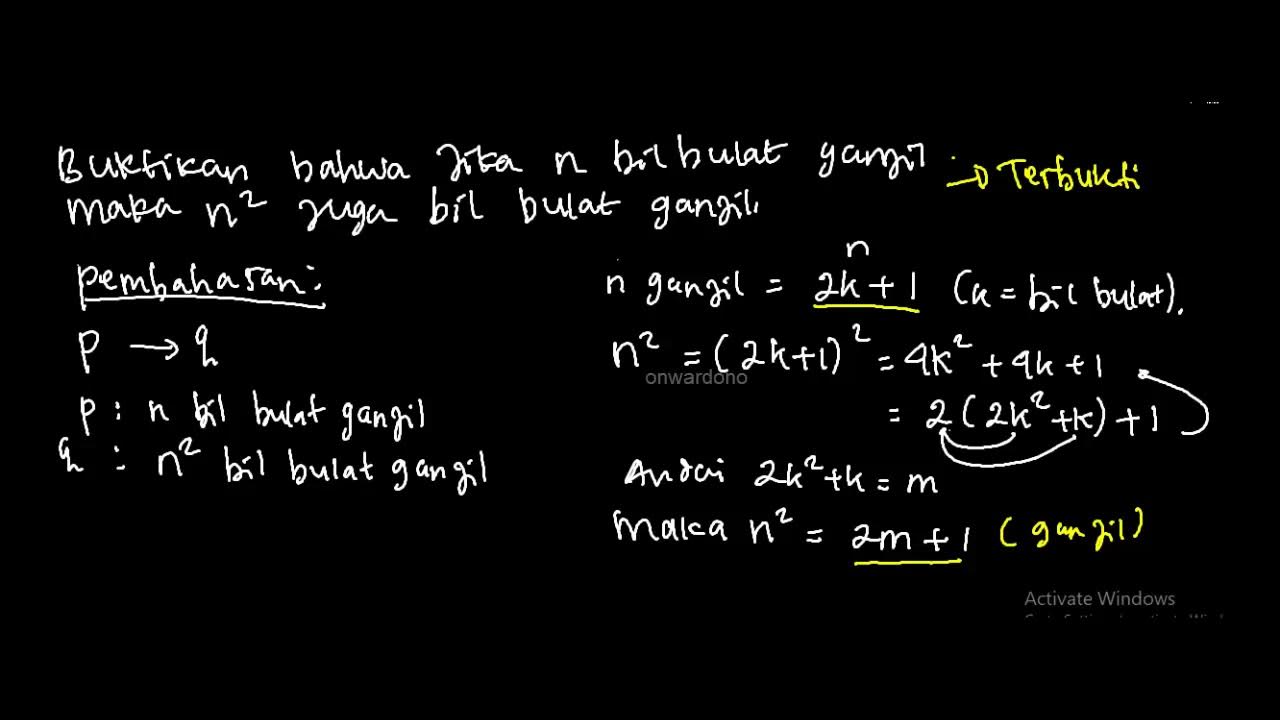What is a Mathematical Proof: Introduction to Mathematical Reasoning #1
Summary
TLDRIn this introduction to mathematical reasoning, Alexander Knop explores the concept of a mathematical proof, which is a sequence of true statements leading to a conclusion. He explains the fundamental notion of implication, using the example of 'if n is greater than one, then n is greater than zero,' to illustrate the relationship between statements. The video clarifies that the truth of an implication is unaffected by the falsity of its antecedent, emphasizing the precision and logic-driven nature of mathematical reasoning. Viewers are encouraged to engage with upcoming episodes to learn more about constructing proofs.
Takeaways
- 📚 The video is an introduction to mathematical reasoning by Alexander Knop.
- 🔍 A mathematical proof is defined as a sequence of statements that starts with known information and concludes with what needs to be proven.
- 📉 Each statement in a proof must be true because the previous one was true, with each step justified by an implication.
- 📌 The concept of implication is introduced with p and q being statements where p implies q means if p is true, then q must also be true.
- 🌐 An example is given with 'n is greater than one' implying 'n is greater than zero', demonstrating the always-true nature of this implication.
- 📊 A truth table is used to illustrate the relationship between p and q, showing that the implication's validity is unaffected when p is false.
- 📝 The formal definition of implication is discussed, emphasizing that it does not imply causality but rather a logical relationship between statements.
- 🚫 The distinction is made between mathematical definitions and real-life implications, noting that in mathematics, causality is avoided.
- 📐 An example of a mathematical statement is given, showing how implications work in mathematical proofs without the need for causality.
- 📚 The video concludes with a discussion on mathematical proofs and promises further episodes on how to construct them.
- ❓ The presenter invites viewers to ask questions in the comments section for further clarification or discussion.
Q & A
What is the central topic of the lecture by Alexander Knop?
-The central topic of the lecture is mathematical reasoning, specifically focusing on the concept of a mathematical proof.
What is a mathematical proof according to the lecture?
-A mathematical proof is a sequence of statements that starts from known information and concludes with what we want to prove, with each intermediate statement being true based on the truth of the previous one and justified by implication.
What is the relationship between statements p and q in the context of implication?
-In the context of implication, if p is true, then q should also be true for the implication 'p implies q' to hold true. If p is false, the truth value of q does not affect the implication.
What is an example of a statement p given in the lecture?
-An example of statement p given in the lecture is 'n is greater than one'.
What is an example of a statement q corresponding to the example of p?
-The corresponding example of statement q is 'n is greater than zero', which is implied by p in the given example.
How does the truth value of p affect the implication p implies q?
-If p is true, then for the implication p implies q to be true, q must also be true. If p is false, the implication is considered true regardless of the truth value of q.
What is the significance of the table presented in the lecture?
-The table is used to illustrate the different cases of the truth values of p and q, showing that the implication holds true in all cases except when p is true and q is false.
How does the lecture distinguish between mathematical implications and real-life causality?
-The lecture emphasizes that in mathematics, an implication like 'p implies q' simply means that if p is true, then q is also true, without implying causation. In real life, saying 'p implies q' often suggests that p causes q, which is a more complex concept that mathematics generally avoids.
What is the practical example given in the lecture to illustrate an implication?
-The practical example given is 'two is less than three' implies 'two times two equals four', which demonstrates that even if the first part of the implication is false, the implication is still considered true.
What will be the focus of the next several episodes according to the lecture?
-The next several episodes will focus on how to construct mathematical proofs.
How can viewers ask questions related to the lecture?
-Viewers are encouraged to ask questions in the comments section of the lecture.
Outlines

This section is available to paid users only. Please upgrade to access this part.
Upgrade NowMindmap

This section is available to paid users only. Please upgrade to access this part.
Upgrade NowKeywords

This section is available to paid users only. Please upgrade to access this part.
Upgrade NowHighlights

This section is available to paid users only. Please upgrade to access this part.
Upgrade NowTranscripts

This section is available to paid users only. Please upgrade to access this part.
Upgrade Now5.0 / 5 (0 votes)





